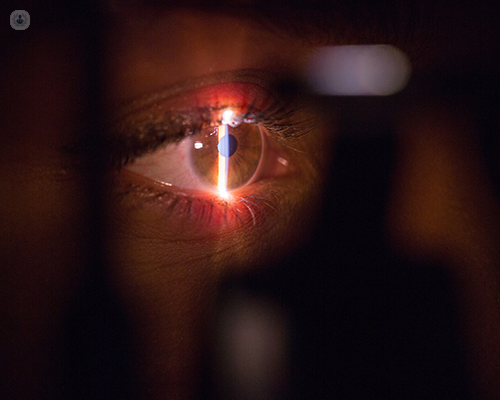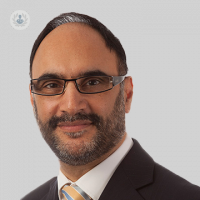Quick and effective: using laser treatment for glaucoma
Written by:Treatment for glaucoma is usually divided into three options: eye drops, laser treatment and glaucoma surgery, which help to decrease the intraocular pressure in the affected eye. Here to provide an expert insight into laser treatment for glaucoma is renowned consultant ophthalmologist Mr Saab Bhermi, who specialises in the early detection, medical management, laser and surgical treatment for glaucoma.

When is glaucoma considered to be severe? When should patients consider undergoing glaucoma laser treatment?
Glaucoma is characterised as a progressive loss of vision, commonly due to fluid build-up inside the eye, leading to high pressure in the eyeball. Most glaucoma treatments are aimed at reducing this pressure and include life-long eye drops, laser treatment or glaucoma surgery.
There are several different types of lasers used to treat glaucoma. The decision to use a particular type of laser depends on the type and extent of glaucoma.
How exactly does laser treatment work when it comes to treating glaucoma?
One common type of glaucoma laser is selective laser trabeculoplasty (SLT), which is a safe and effective treatment. I offer this to most of my newly diagnosed patients with early or moderate glaucoma who wish to minimise the need for glaucoma drops. SLT reduces eye pressure by increasing fluid flow through the natural outflow pathway from the inside eye to the collector channels outside the eye. The laser treatment is a quick outpatient procedure (doesn’t require an overnight hospital stay) and takes approximately five to 10 minutes per eye.
YAG laser iridotomy is another common type of glaucoma laser treatment. This is used for patients whose fluid flow inside the eye is hindered from flowing from the back of the eye, through the pupil, to the front of the eye where it normally exits through the collector channels in the drainage angle. This hindrance can lead to high pressure and narrow drainage angle glaucoma which is generally painless. If the pressure becomes very high, very quickly, it is called “acute” glaucoma and can lead to severe eye pain and loss of vision. The YAG laser bypasses slow fluid flow through the pupil by making an extra route through the iris, allowing fluid to move from the back to the front of the eye, reducing eye pressure.
Who is the ideal candidate for laser treatment for glaucoma?
The ideal candidate for SLT is a recently diagnosed patient with early or moderate glaucoma. This laser can be the only treatment that is required or it can act as an adjunct to glaucoma eye drops. It is also an option for patients who are intolerant of eye drops or find using regular eye drops difficult.
YAG laser treatment is needed only in patients who have a narrow drainage angle. A narrow drainage angle is more common in patients who are hyperopic (long-sighted) and is usually diagnosed by an optician or eye doctor who may then recommend a YAG laser treatment.
How effective and safe is it? What are the main associated potential complications?
SLT is relatively safe. Severe complications are rare and it is effective in 70 to 90 per cent of patients. Only one treatment is needed for most patients. If the pressure-lowering effect diminishes with time, the laser treatment can be repeated (usually no more than two to three times).
YAG laser treatment is also an outpatient procedure which takes a few minutes per eye, has minimal side effects and needs to be performed only once.
Mr Saab Bhermi is a renowned consultant ophthalmologist based in London with expertise in the management and treatment of glaucoma, including laser treatments, minimally invasive glaucoma surgery and glaucoma Tube implants. If you’re considering laser treatment for your glaucoma and wish to know more, make sure to visit Mr Bhermi’s Top Doctors profile today.


